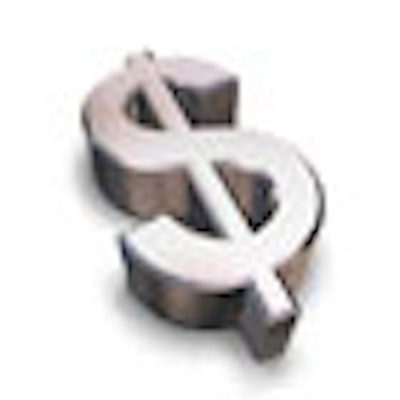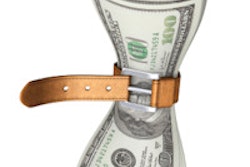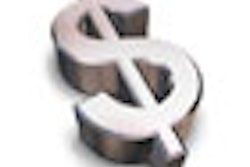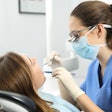
The sun is peeping through the clouds. In an ADA survey of 1,966 U.S. dentists, a narrow majority reported either stable or increasing income for the first quarter of 2010, compared to the previous quarter.
By comparison, only 17% of dentists surveyed reported an increase in income in the fourth quarter of 2009, while 56.7% reported a decrease.
The percentage reporting an increase (26.8%) was the largest since the ADA began tracking these figures in the third quarter of 2008 in its Quarterly Survey of Economic Confidence. And the percentage reporting a decline (44.7%) was the smallest.
we hit bottom?' I think
we did.”
— David Goodman, C.P.A.
The figures correspond to the experience of David Goodman of the Academy of Dental Certified Public Accountants (ADCPA). "What we're seeing is relatively flat," he said. "If you're asking, 'Did we hit bottom?' I think we did."
Gross billing, treatment acceptance, open appointments, and patient volumes all improved between the fourth quarter of 2009 and the first quarter of 2010 in the ADA survey. "The improvements in these indicators are welcome news," the survey takers wrote. "But we believe there is a strong seasonal component to the positive reports."
Some patients can afford more treatment at the beginning of the year because their maximum spending limits are reset and because flexible spending account dollars become available, which could explain part of the uptick, they wrote.
In fact, the results a year ago -- in the first quarter of 2009 -- were almost as good: 48% reported lower net income than the previous quarter and 25.5% reported a higher one. Still, the latest figures show two consecutive quarters of overall improvement for the first time since the survey began.
The ADA statistics were consistent across all regions of the U.S.
Suppliers' earnings also flat
The findings also tallied with reports by major dental suppliers that demand for their products has steadied. "The dental markets have shown a modest recovery in the first half of 2010," said Bret Wise, chairman and CEO of Dentsply International, on July 29. Most of the company's 2.2% growth in sales for the second quarter of 2010 was in European markets, with the U.S. market essentially flat.
"The dental market is stabilizing, and we are encouraged by some preliminary indications that the market may be starting to strengthen," said Patterson Dental President and CEO Scott Anderson on May 20.
And on August 2, Henry Schein reported dental revenues of $678 million, up 8.9% from dental revenues for the same quarter a year ago. "Strong internal growth in Dental equipment sales reflects higher demand for basic and for high-tech equipment and is another positive market indicator," said Stanley M. Bergman, chairman and CEO, in a press release.
Goodman quoted an analysis by the medical financing company Matsco that found healthcare was among the quickest sectors to recover after a recession. He said many of his clients are investing in new equipment in anticipation of an uptick. "Interest rates are so low now, it's a really good time," he said.
In addition, the maximum deduction under Section 179 of the U.S. tax code is likely to be reduced, he said. Currently, businesses can deduct up to $250,000 in the first year a purchase is made, rather than having to amortize the deduction over the life of the asset. That amount is likely to be lowered in 2011, Goodman said.
What dentists earn
What's not clear from the economic confidence survey is exactly how much dentists' incomes have been affected by these trends. But a separate ADA survey, 2009 Survey of Dental Practice -- Income from the Private Practice of Dentistry, shows that the recession took a bite.
Since at least 2003, when the average independent dentist made $200,000 a year, dentists' incomes had been on a steady uptick in the U.S., according to the ADA findings. Incomes rose at an average rate of 4.2% per year, reaching $234,120 in 2007 -- a rate that exceeded inflation by about 1%. (The ADA did not release information about methodology for this survey.)
But in 2008, the average independent dentist's salary dropped to $230,290, a 1.6% decline from 2007 (the ADA has not yet reported 2009 incomes). That dip apparently took away all the progress dentists had made versus inflation in the previous four years; the ADA is now estimating that independent dentists experienced a 0.5% decline in real income from 2004-2008.
The report also broke down income figures for specialists (who made $342,270) and general practitioners (who made $207,210) in 2008.
Not every region fared the same, the ADA found. In the Middle Atlantic, incomes rose from $220,110 in 2007 to $251,150 in 2008. Likewise the East North Central region got a boost from $210,770 to $213,550; the East South Central region from $223,020 to $273,550; the West South Central region from $242,380 to $243,730; and the Mountain region from $228,550 to $236,860.
These were more than offset by declines in New England, from $325,430 to $280,380; in West North Central, from $220,670 to $216,170; in the South Atlantic, from $257,480 to $241,270; and in the Pacific, from $231,830 to $209,690.
These figures show that dentists in the Pacific region are now the most poorly paid, displacing the East North Central region. New England dentists remain the highest paid, despite the 14% decline experienced in that region from 2007 to 2008.
Whether the upward trends suggested by the economic confidence survey hold true in actual dollars won't be confirmed by the more precise income survey for two more years.
Copyright © 2010 DrBicuspid.com



















